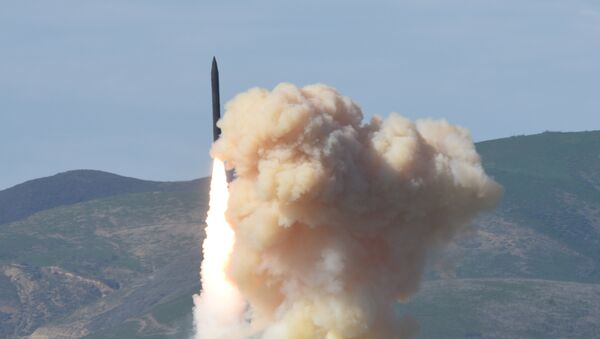The Trump administration is considering new ways to expand US defences against a potential missile attack both within the country and beyond, AP reported.
READ MORE: NATO Chief: February Deadline ‘Last Chance’ for Russia to Comply With INF Treaty
Donald Trump’s approach to the system is expected to focus on stopping missiles before they are launched or in the first few minutes of flight while their booster engines are still burning. Congress has reportedly encouraged the Pentagon to push harder on that approach, which might include the use of drones equipped with lasers.
The media outlet, however, noted that deploying missile interceptors aboard satellites in space is not expected to be part of the Trump strategy.
According to AP, the United States is expected to reveal the details after the Pentagon releases the results of a missile defence review on Thursday. The release of the document was delayed last year for unknown reasons, although it came as Trump was engaged in talks with North Korea’s Kim Jong-un on denuclearisation. The publication might have complicated the negotiations.
In a parallel development, Russia has sent a letter to US lawmakers, accusing Washington of undermining the New Strategic Arms Reduction (New START) treaty, a 2010 bilateral accord on nuclear arms reduction, The Wall Street Journal reported.
“In the worst case scenario these problems might potentially disrupts prospects for its extension after 2021. […] We cannot confirm full implementation by the United States of its obligations under Article II of the Treaty. Accordingly, we shall continue to point out this situation in the course of bilateral contacts on all levels, as well as direct the attention of the international community to this absolutely abnormal state of affairs”.
The New START treaty, which was signed in 2010 and entered into force a year later, covers a ten-year period with the possibility of a five-year extension. The accord limits the number of deployed intercontinental ballistic missiles, submarine-launched ballistic missiles, nuclear-armed bombers, and nuclear warheads.
Moscow has flatly denied the allegation, emphasising that Washington, for its part, was deploying launchers for Tomahawk cruise missiles in Romania and Poland – a violation of the INF Treaty’s provisions.
The treaty was signed by the Soviet Union and the US, and envisaged the destruction of all nuclear-armed ground-launched ballistic and cruise missiles with ranges between 500 and 5,500 kilometres (about 300 to 3,400 miles).




